Top Photo: Devil’s stinkhorn.
The spreading of mulch is a common chore here at the museum. What with new plants going in, exhibits being installed or altered and multiple other projects going on, mulch is a common sight.
Following the mulch, sometimes months later, comes fungus. Various mushrooms rise up out of the decaying organic material in the mulch.
Pictured, we have what looks like devil’s stinkhorn (Phallus rubicundus) which is not a North American species. It’s similar to native elegant stinkhorn (Mutinus elegans) though the spore mass (brown stuff at tip) is restricted to the tip, and is actually brown not green-brown, as on elegant stinkhorn.
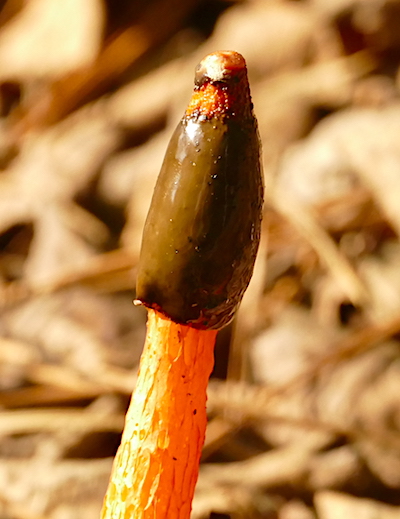
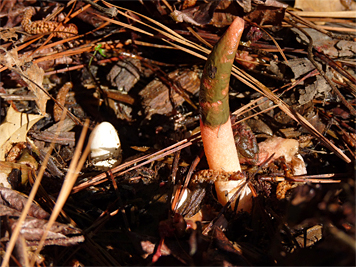
The spore mass stinks and has an adhesive quality, it attracts flies and sticks to their feet and bodies. When the flies land elsewhere the spores drop off setting the stage for mycelial growth and new stinkhorns arising in appropriate conditions among decaying organic material.
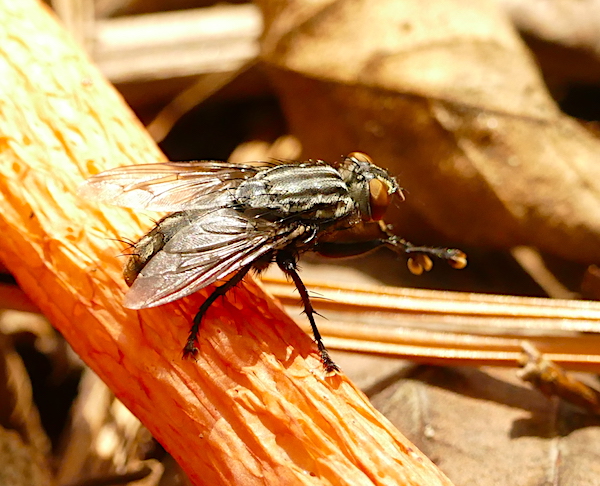
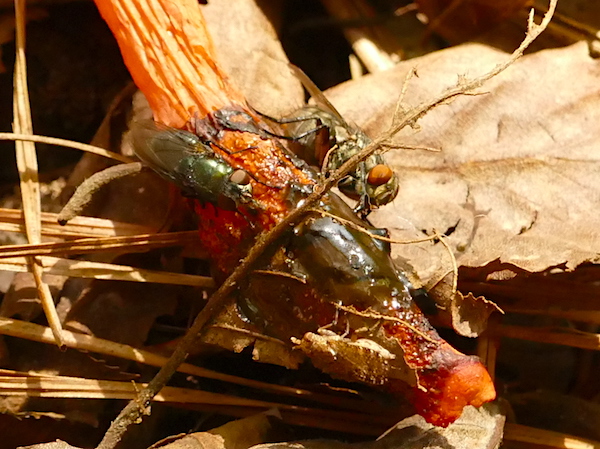
Butterflies are still flying, and will be, as long as the sun shines and the air is warm. Four species seen this week, and standing still long enough to photograph, were clouded skipper, eastern-tailed blue, pearl crescent, and red-banded hairstreak.
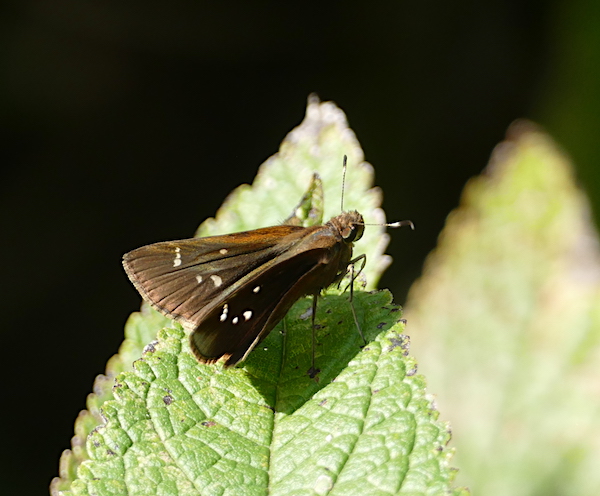
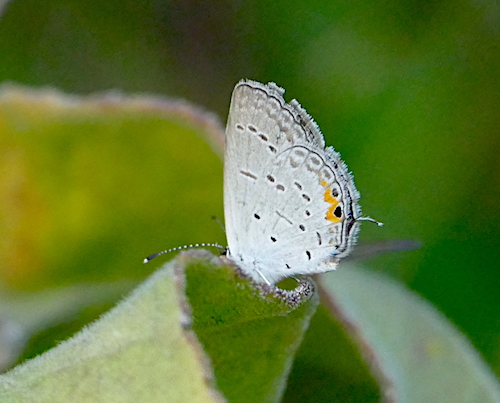
The pearl crescent below has had an encounter with some sort of predator taking a piece of each hindwing.
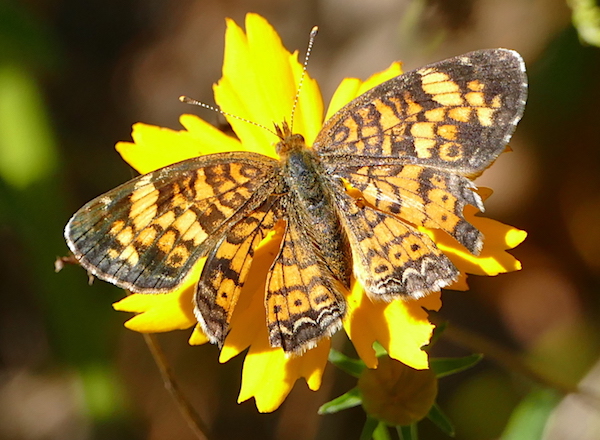
The pearl crescent below shows the reason for the name, a pearly crescent on the underside of the hindwing.
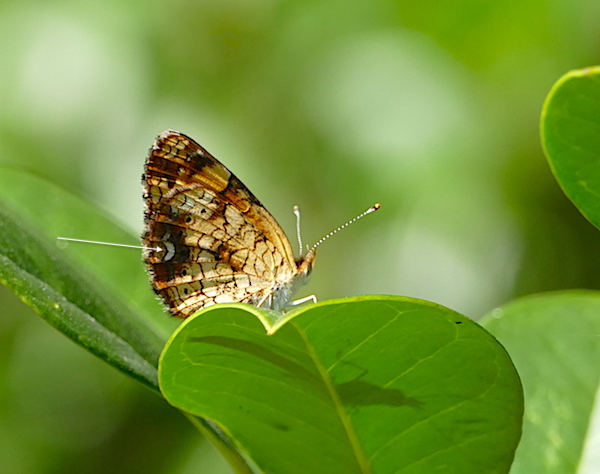
I spotted the red-banded hairstreak on a boundary wall in Wander Away in Catch the Wind.

Two wasps were visiting the crownbeard and goldenrod in Wander Away, one a social wasp, the other a solitary species.
Red paper wasp (Polistes carolinus) is a species of paper wasp common to our area. They’re social, meaning they nest in collective hives. The hives are made of paper which consists of chewed and processed plant and wood fibers. These wasps visit flowers in late summer and fall.

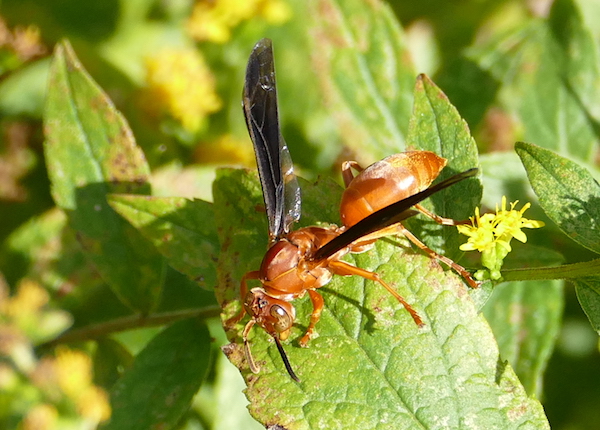
Double-banded scolid wasps (Scolia bicincta) are solitary wasps. They nest individually, not in groups or colonies as some other wasp species. They too can be found visiting late summer and fall flowers.
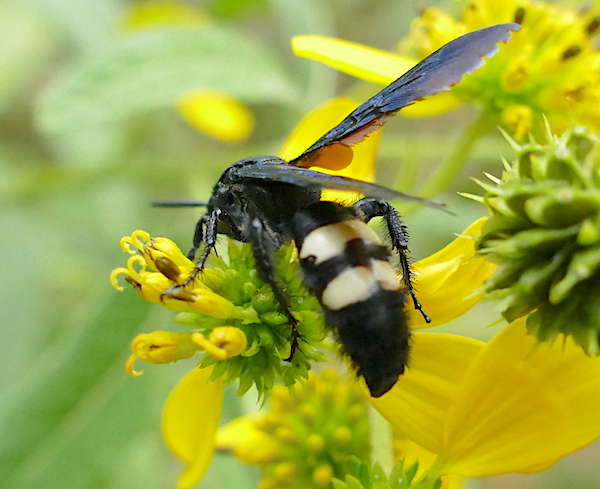
These wasps locate beetle larvae underground and burrow down into the soil after the prey. Once acquired, the wasp stings the larva, paralyzing it. The wasp then lays an egg on the victim and leaves it to survive on its own, it will devour the beetle larvae after hatching.
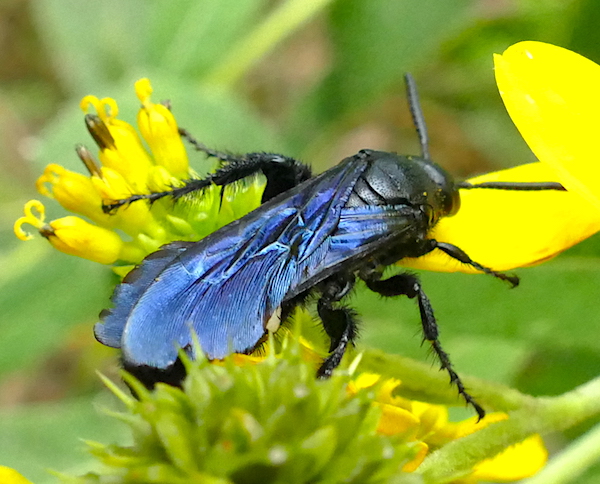
Juvenile green anoles seem to be everywhere. Here’s a few small juveniles I spotted this past week in the plantings surrounding the outdoor seating at the Cafe Plaza.
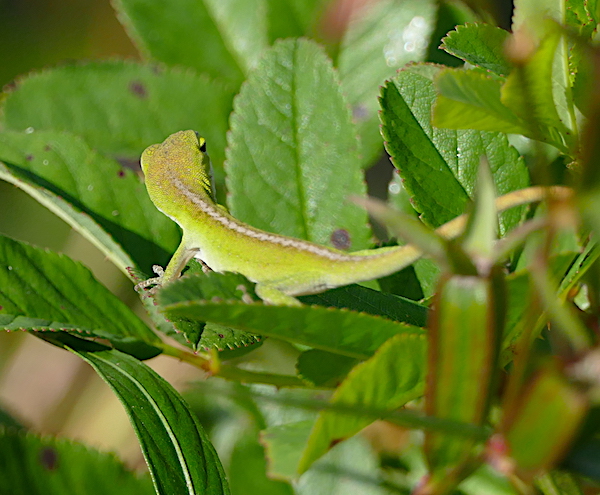
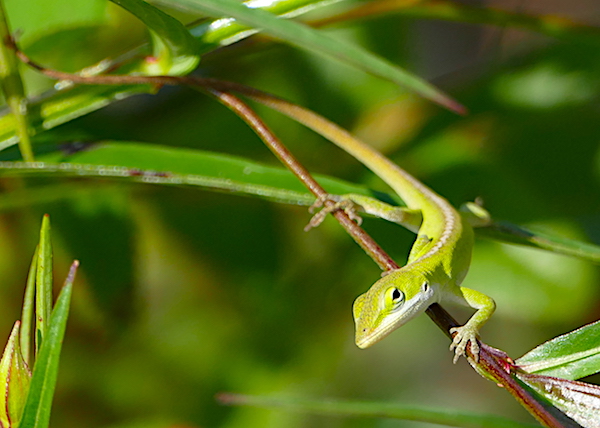
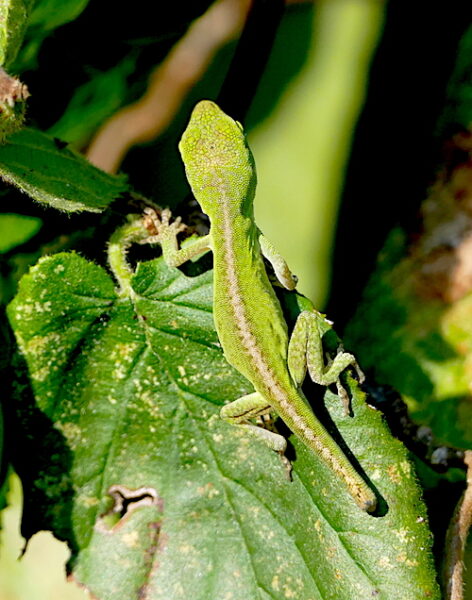
In taking the loop through Wander Away you may get a glimpse of one of our resident ground hogs. It lives under a large tree stump next to the path.

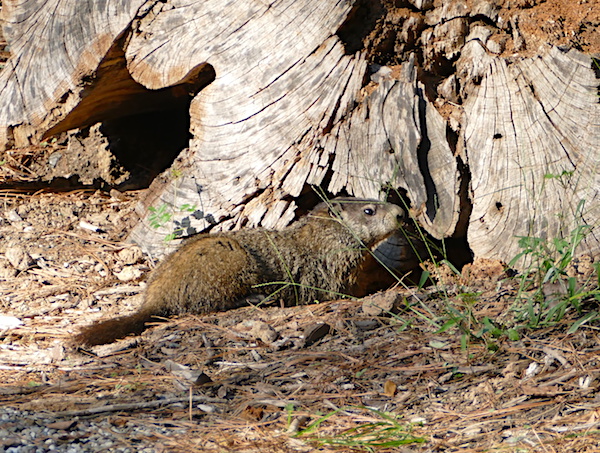
And finally, what is causing a redbud tree on our Dinosaur Trail to push out flowers in October? Redbud officially blooms in March and April here on the North Carolina Piedmont.

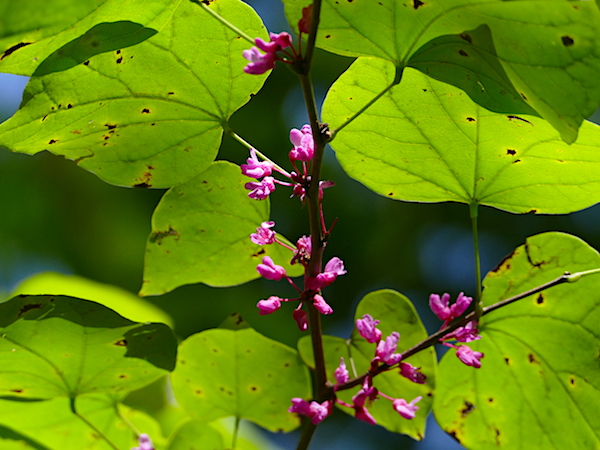
Three things you’ll see now that you won’t see in March on our currently blooming redbud tree; flowers, leaves, and seed pods at the same time. The tree typically blooms before leave-out in spring. There’s often seed pods left on the trees in spring, but the leaves are just beginning to sprout as the flowers fade.
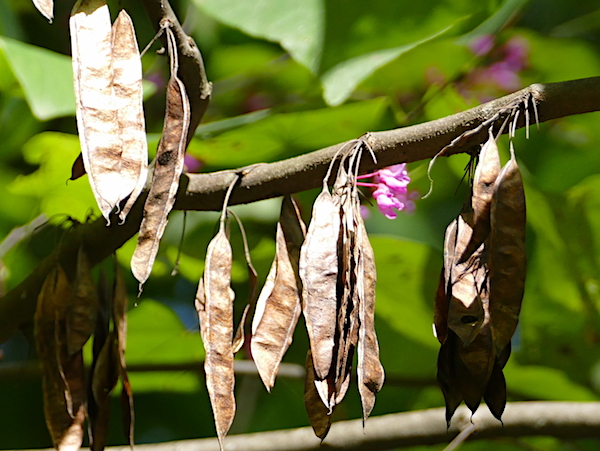
Have fun!